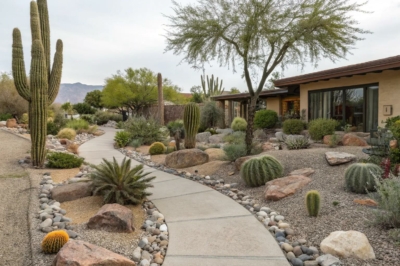1. Create a Dry Creek Bed
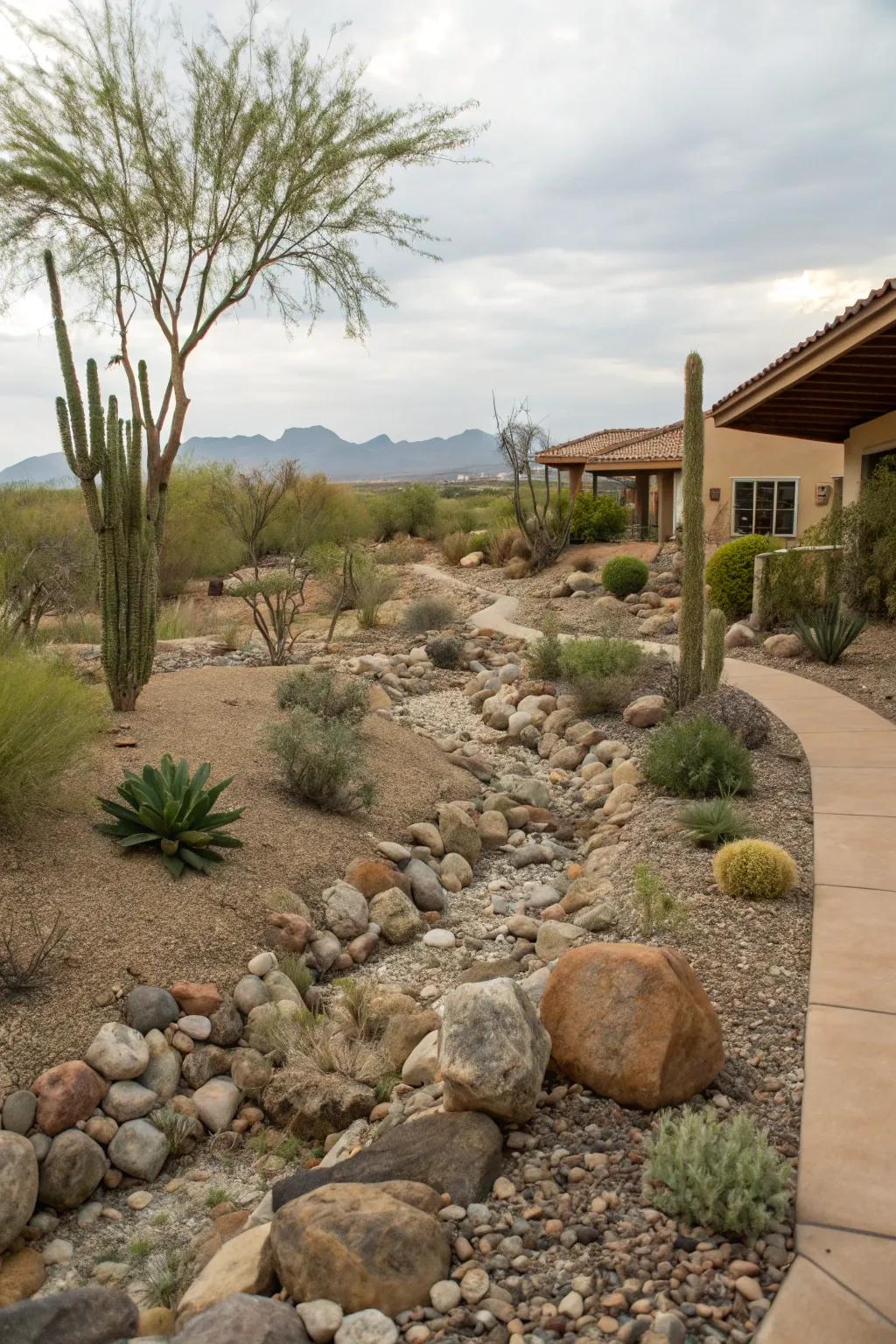
A dry creek bed can serve as both a visual feature and a drainage solution. I’ve found it to be a perfect way to manage rainfall while adding natural beauty.
Check these products out:
- Decorative River Stones: Enhance your dry creek bed with natural river stones for a stunning visual effect.
- Landscape Fabric: Use durable landscape fabric to prevent weed growth and maintain your dry creek bed design.
- Desert-Friendly Plants: Add desert-friendly plants to complement your dry creek bed and create a cohesive look.
2. Design a Rock Garden
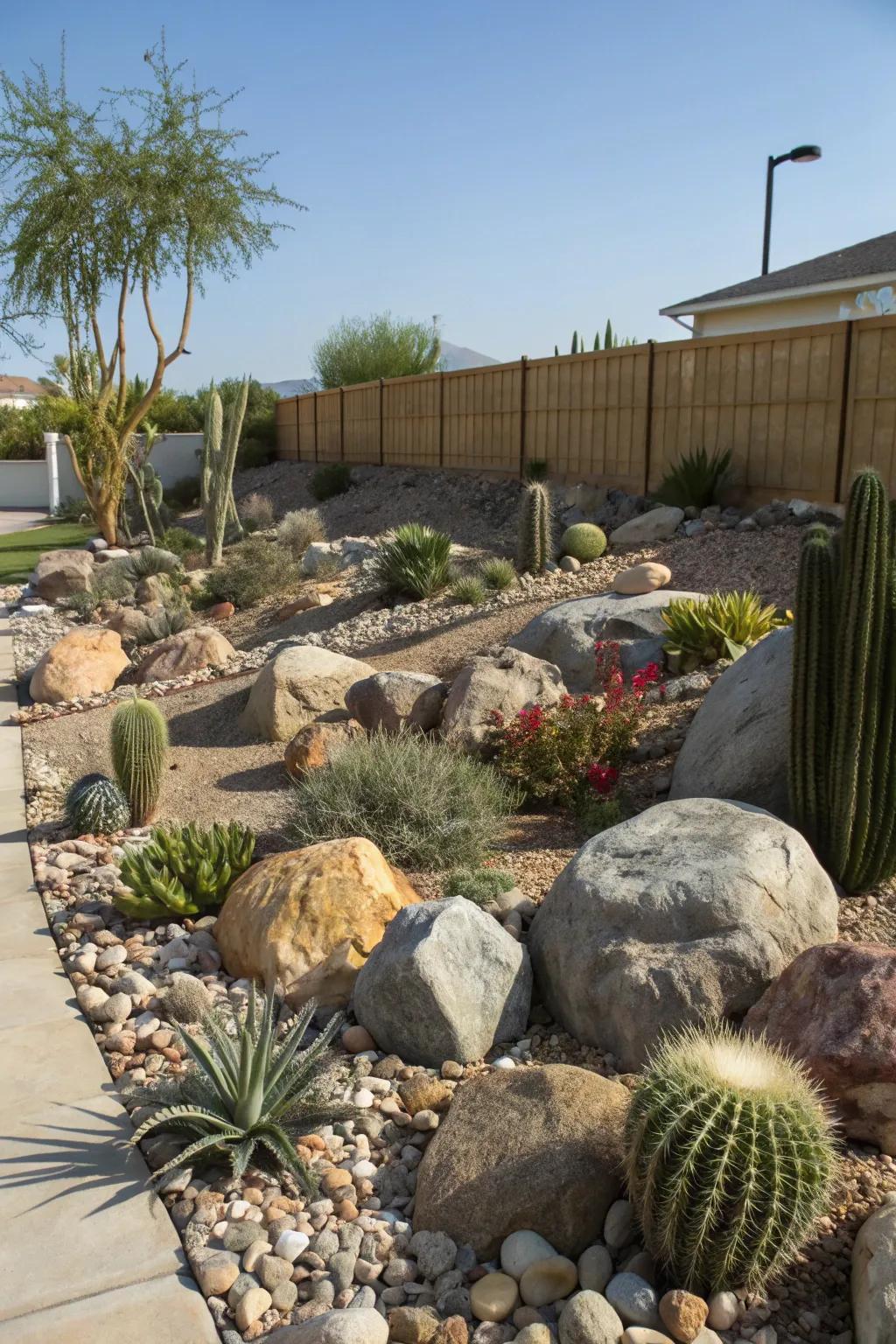
A rock garden can be both visually stunning and water-efficient. I’ve used rocks to mimic the natural desert environment, creating a seamless look.
Explore these options:
- Decorative River Rocks: Enhance your garden’s aesthetic with these natural river rocks. Perfect for a seamless desert look.
- Drought-Tolerant Succulent Plants: Add vibrant life to your rock garden with drought-tolerant succulents. Beautiful and low-maintenance.
- Cactus Soil Mix: Ensure healthy growth for your plants with specialized cactus soil. Promotes proper drainage and nutrition.
3. Opt for Minimalist Decor
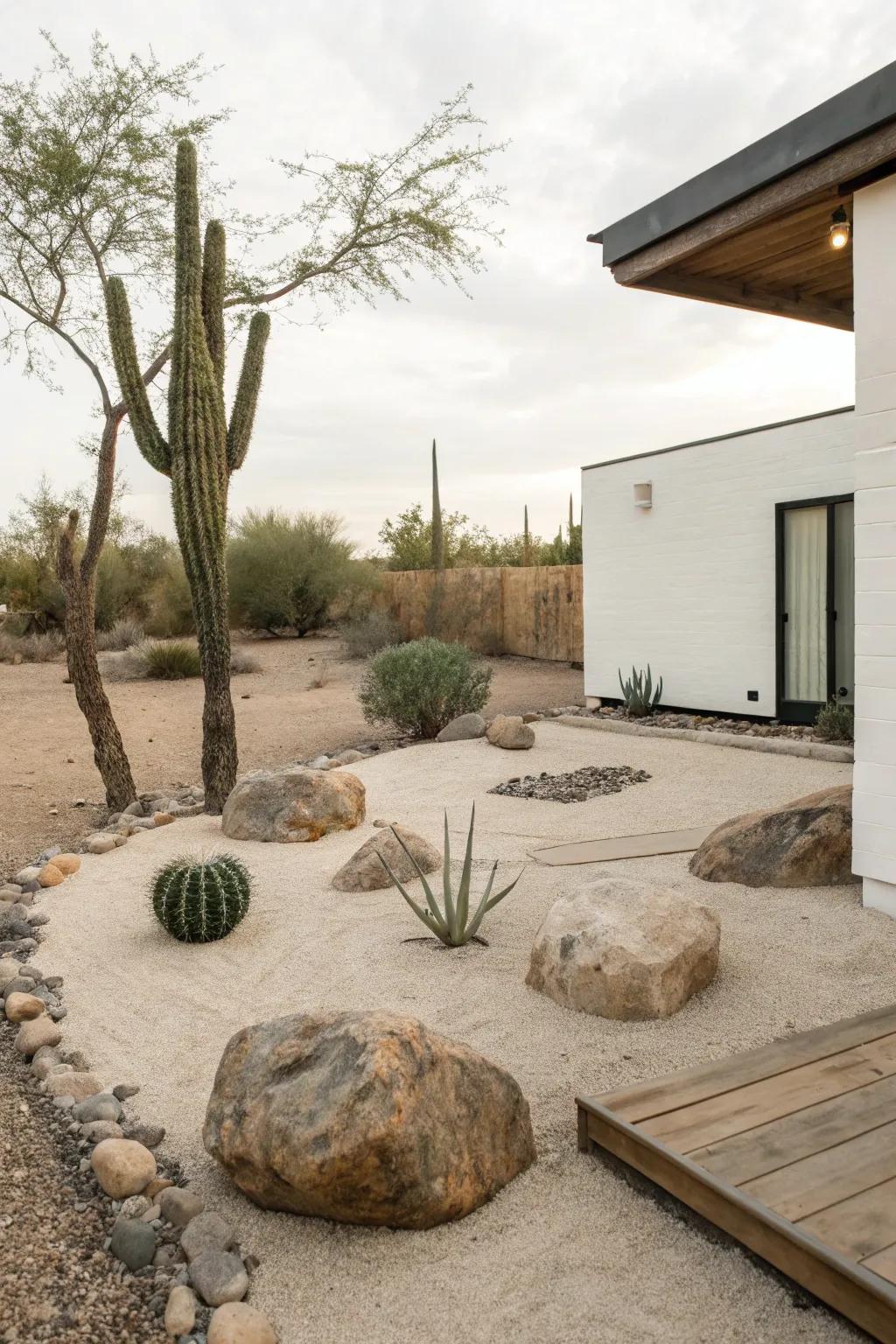
Simple, desert-themed decor like clay pots or minimalistic sculptures can enhance your yard’s aesthetic without overwhelming it. In my projects, these elements often become subtle focal points.
Give these a look:
- Minimalist Clay Pots Set: Enhance your desert vibe with these elegant clay pots, perfect for cacti and succulents.
- Modern Outdoor Sculptures: Add a subtle focal point with minimalistic sculptures that complement desert landscapes beautifully.
- Desert-Themed Garden Stones: Create texture and depth using decorative stones solely designed for desert landscaping.
4. Focus on Texture and Form
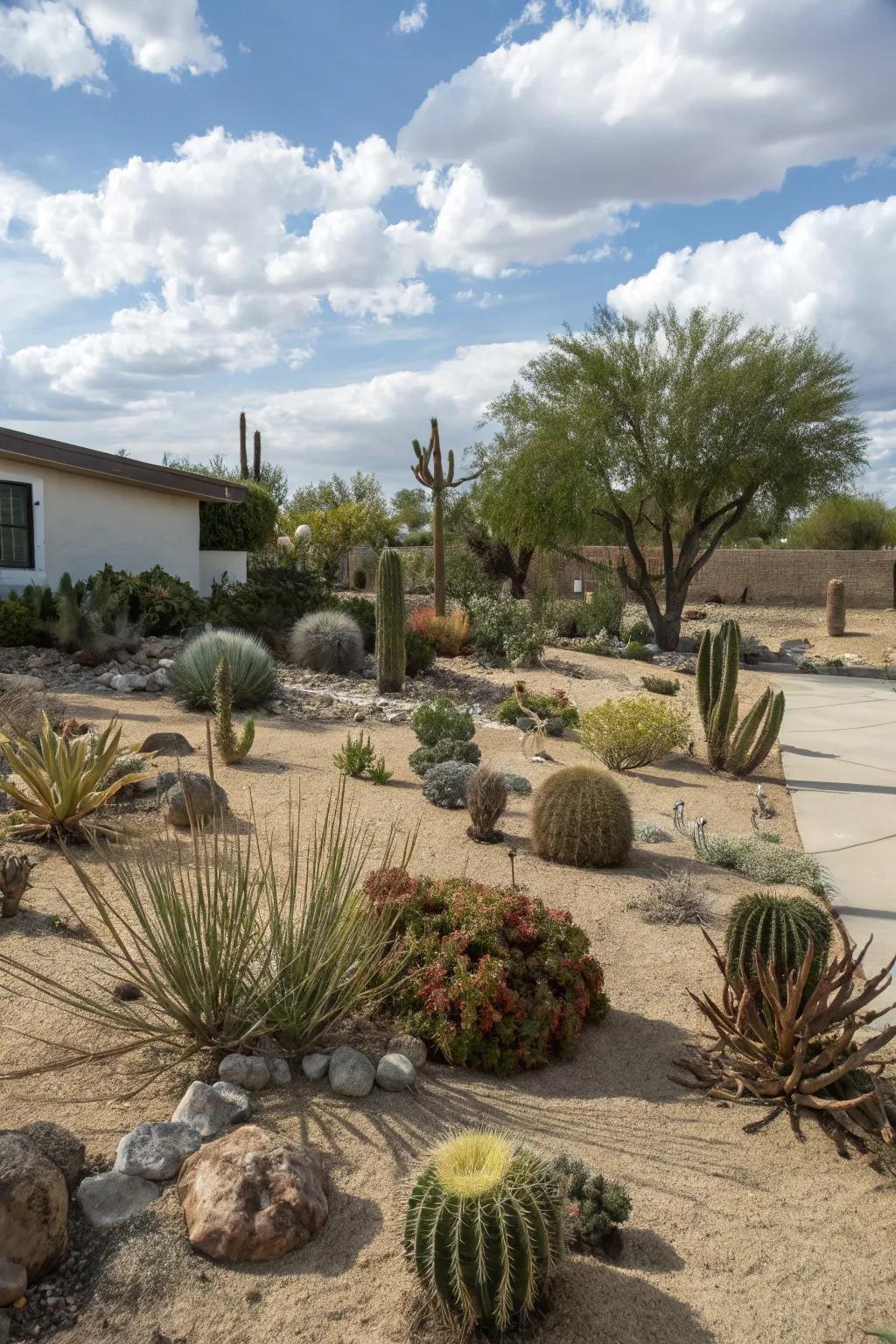
Combining plants with unique textures and forms can create a dynamic and engaging landscape. My yard is a testament to how texture can captivate the senses.
Try these:
- Outdoor Cactus and Succulent Collection: Enhance your landscape with diverse textures and captivating plant forms. Add intrigue today!
- Decorative Large Landscape Rocks: Add natural texture and visual interest with these statement-making landscape rocks. Transform your yard!
- Drip Irrigation Kit for Desert Plants: Ensure your desert plants thrive with efficient and easy-to-install drip irrigation. Simplify watering!
5. Choose a Soft and Warm Color Palette
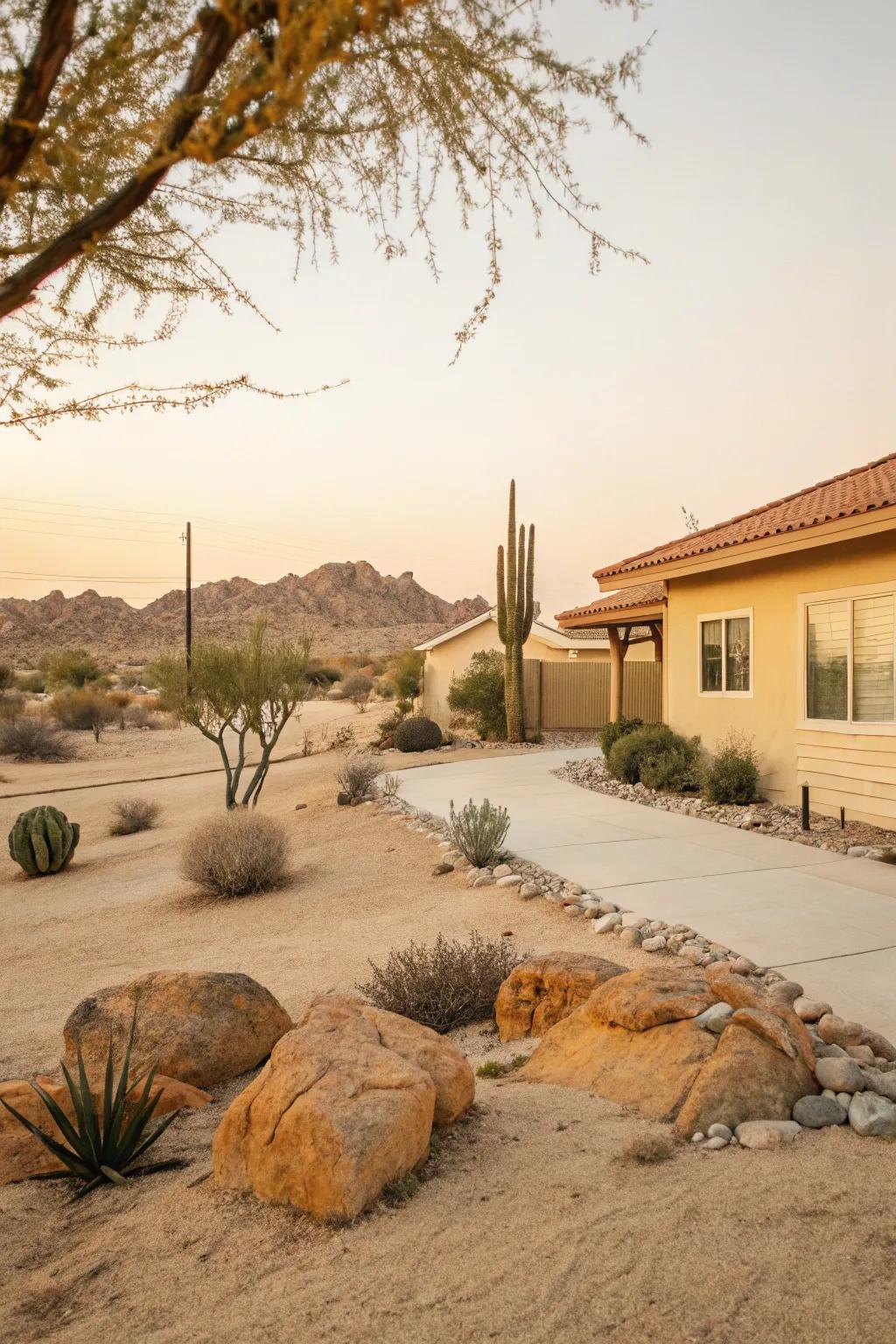
A palette of soft earth tones can create a harmonious blend with the desert surroundings. I’ve used warm browns and beiges to create a calming backdrop for my plants.
Possibly handy products:
- Outdoor Beige Decorative Pebbles: Enhance your landscape with these natural pebbles; perfect for creating serene desert aesthetics.
- Warm Brown Outdoor Planters: Accent your plants with these elegant brown planters for a cohesive desert yard design.
- Earth Tone Patio Lighting: Illuminate your desert landscape warmly with these earth-toned lights, adding ambiance to your yard.
6. Create Natural Pathways
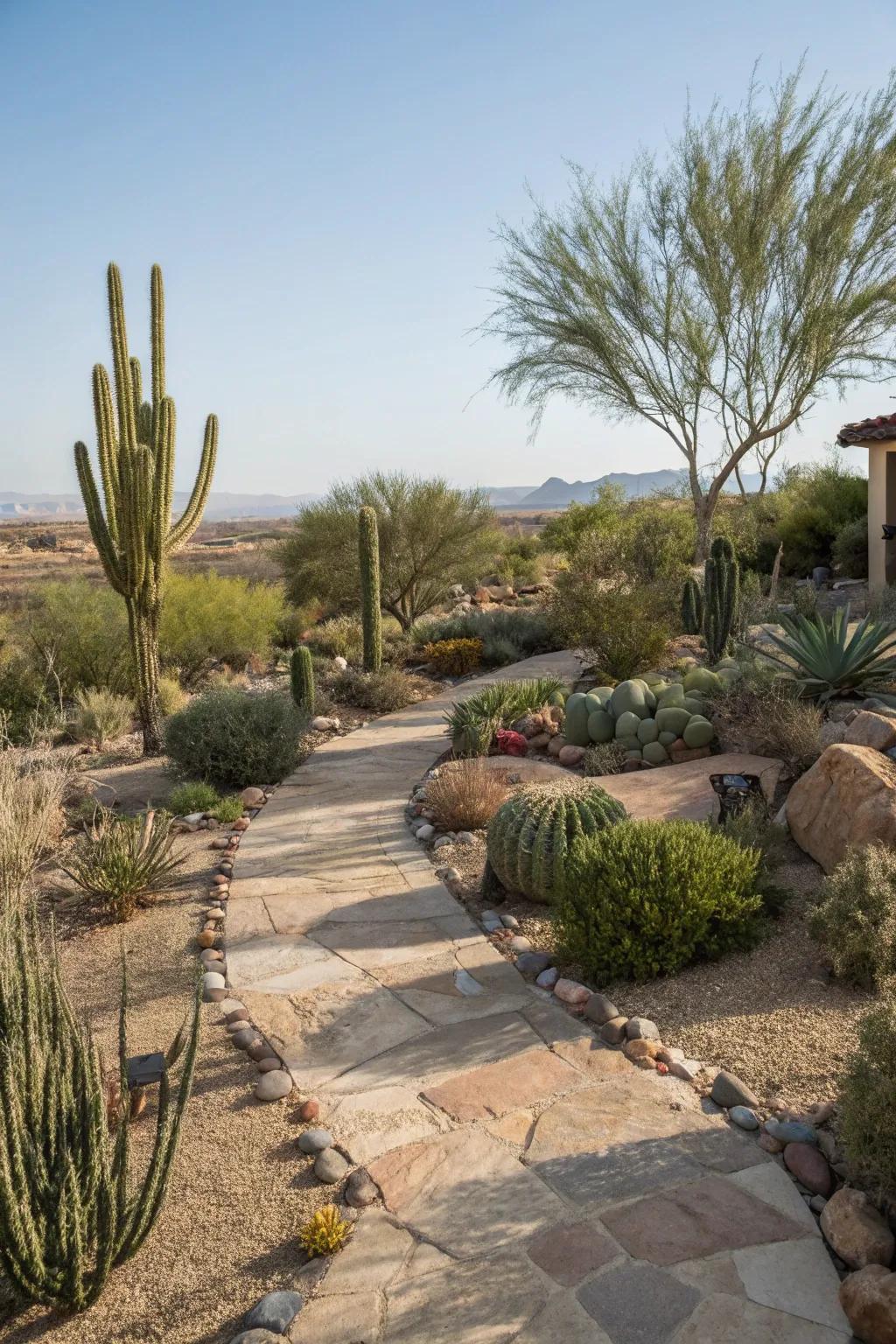
Incorporate natural-looking pathways to guide the eye and provide access through your landscape. I’ve used stepping stones to create paths that feel organic and blend seamlessly with the environment.
These products might be useful:
- Natural Stone Stepping Stones: Enhance your yard with these natural stone stepping stones, blending seamlessly with the desert landscape.
- Outdoor Garden Pathway Lights: Highlight your pathways with solar-powered lights, adding safety and ambiance to your desert landscape.
- Drought-Resistant Decorative Gravel: Create a low-maintenance, beautiful landscape with decorative gravel that complements your desert theme.
7. Embrace Xeriscaping

Xeriscaping is all about using drought-tolerant plants to create a stunning landscape that sips rather than guzzles water. In my own yard, I’ve seen how these hardy plants can transform a space with minimal care.
Consider these options:
- Drought-Tolerant Plant Seeds: Transform your yard with drought-tolerant seeds that thrive in arid environments with minimal water.
- Decorative Landscape Rocks: Enhance your desert landscape with aesthetic rocks to add texture and natural appeal.
- Xeriscaping Ground Cover: Choose ground cover ideal for conserving moisture and adding color to your dry landscape.
8. Showcase Succulents and Cacti
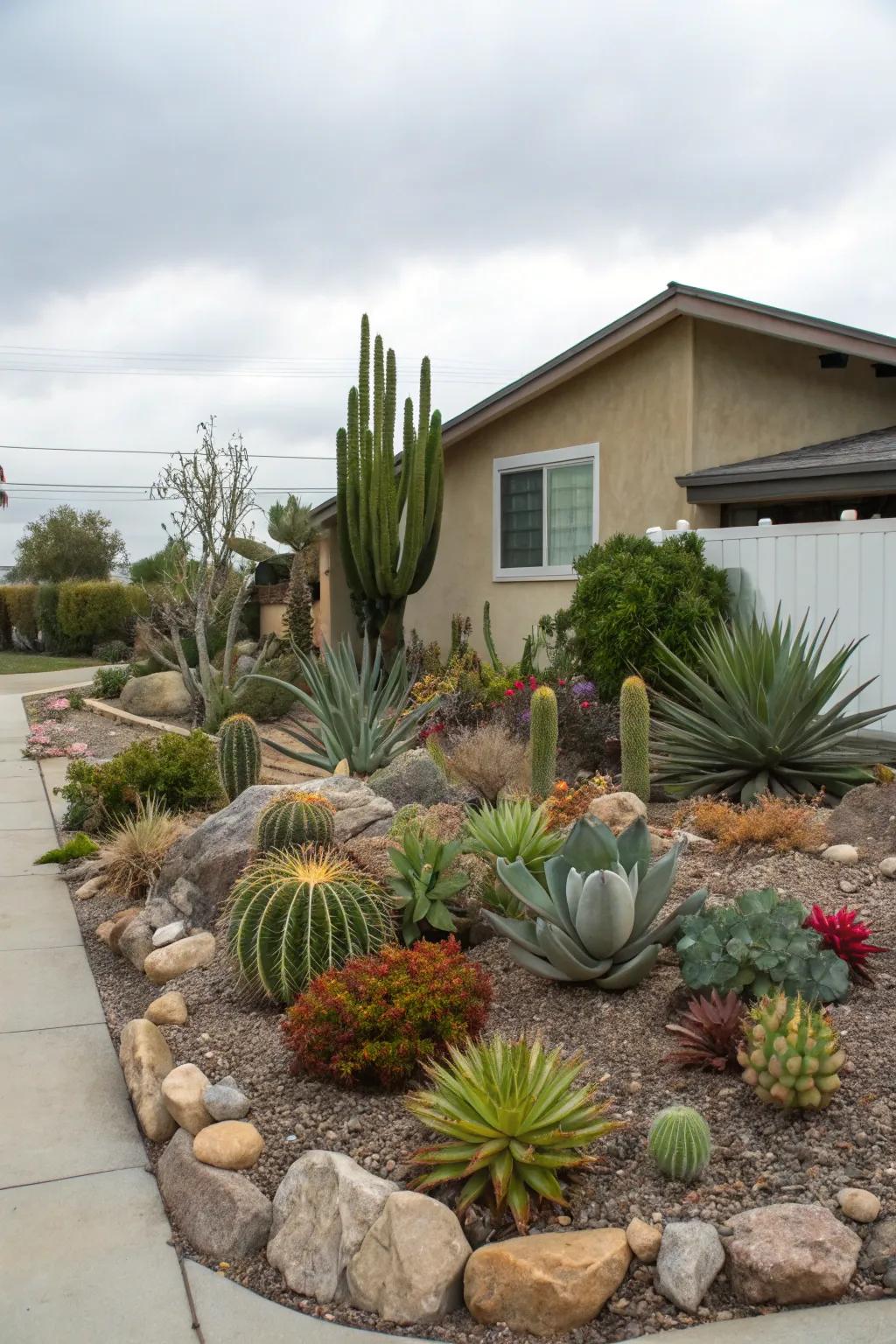
Succulents and cacti are the stars of any desert garden. They’re not just low-maintenance; their varied shapes add a unique architectural element to your yard, something I’ve always loved in my own space.
These products might help:
- Mixed Variety Pack of Drought-Tolerant Succulents: Enhance your yard’s aesthetics with diverse, stunning succulents. Perfect for low-maintenance beauty.
- Desert Landscaping Cactus Collection: Add unique architectural flair with this hardy cactus collection, ideal for outdoor landscaping.
- Decorative Rock Mulch for Gardens: Create a polished look in your yard with decorative rock mulch. Excellent for water conservation.
9. Incorporate Shade Elements
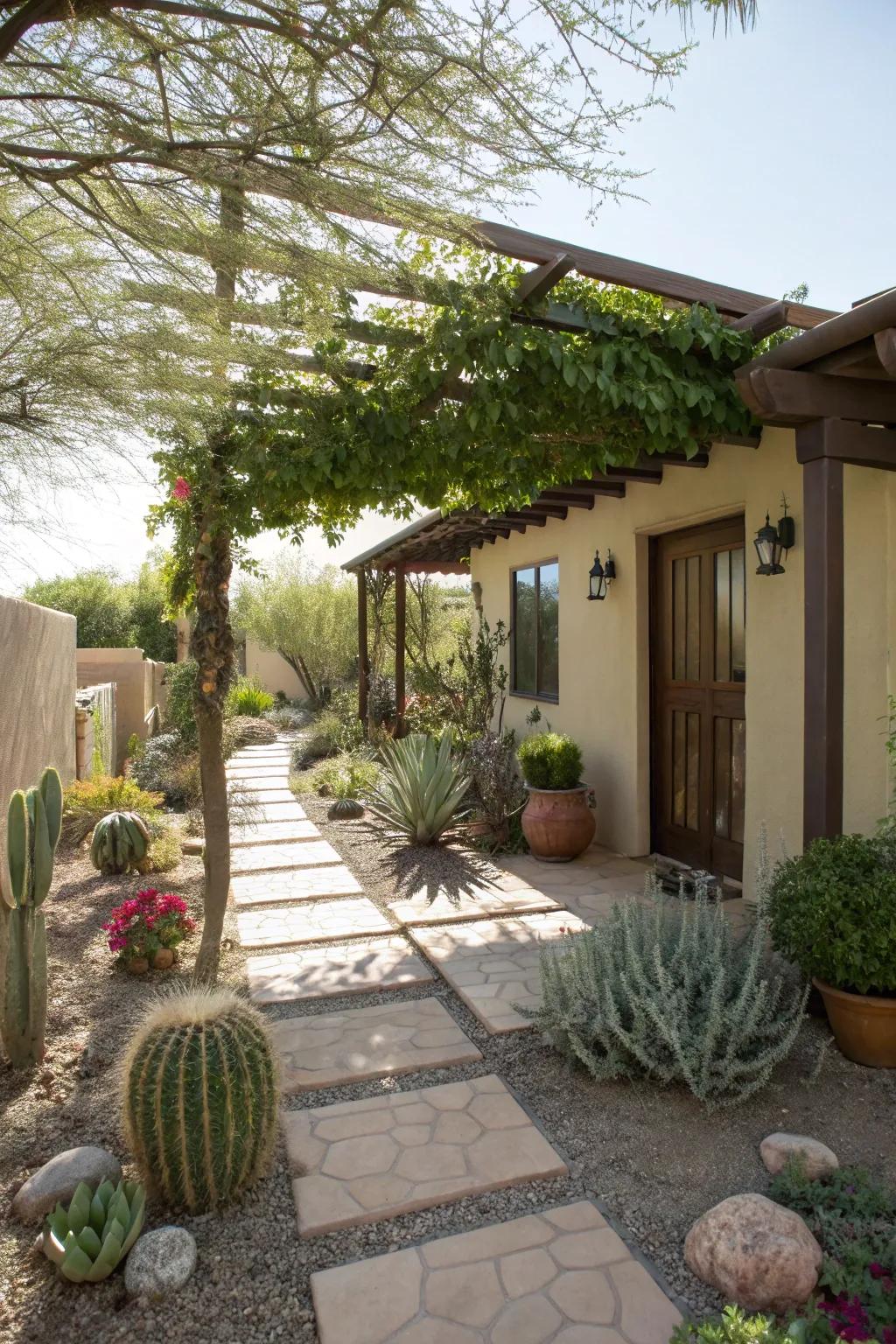
Adding pergolas or strategically placed trees can provide much-needed shade and comfort. In my experience, they also create cozy spots to relax and enjoy the view.
Maybe worth checking out:
- Outdoor Pergola Kit: Enhance your yard with a stylish pergola and create a cozy, shaded retreat.
- Patio Shade Sail: Add modern shade to your space effortlessly with a versatile patio shade sail.
- Fast-Growing Shade Trees: Choose fast-growing shade trees to naturally cool your yard and enhance privacy.
10. Integrate Drought-Tolerant Grasses
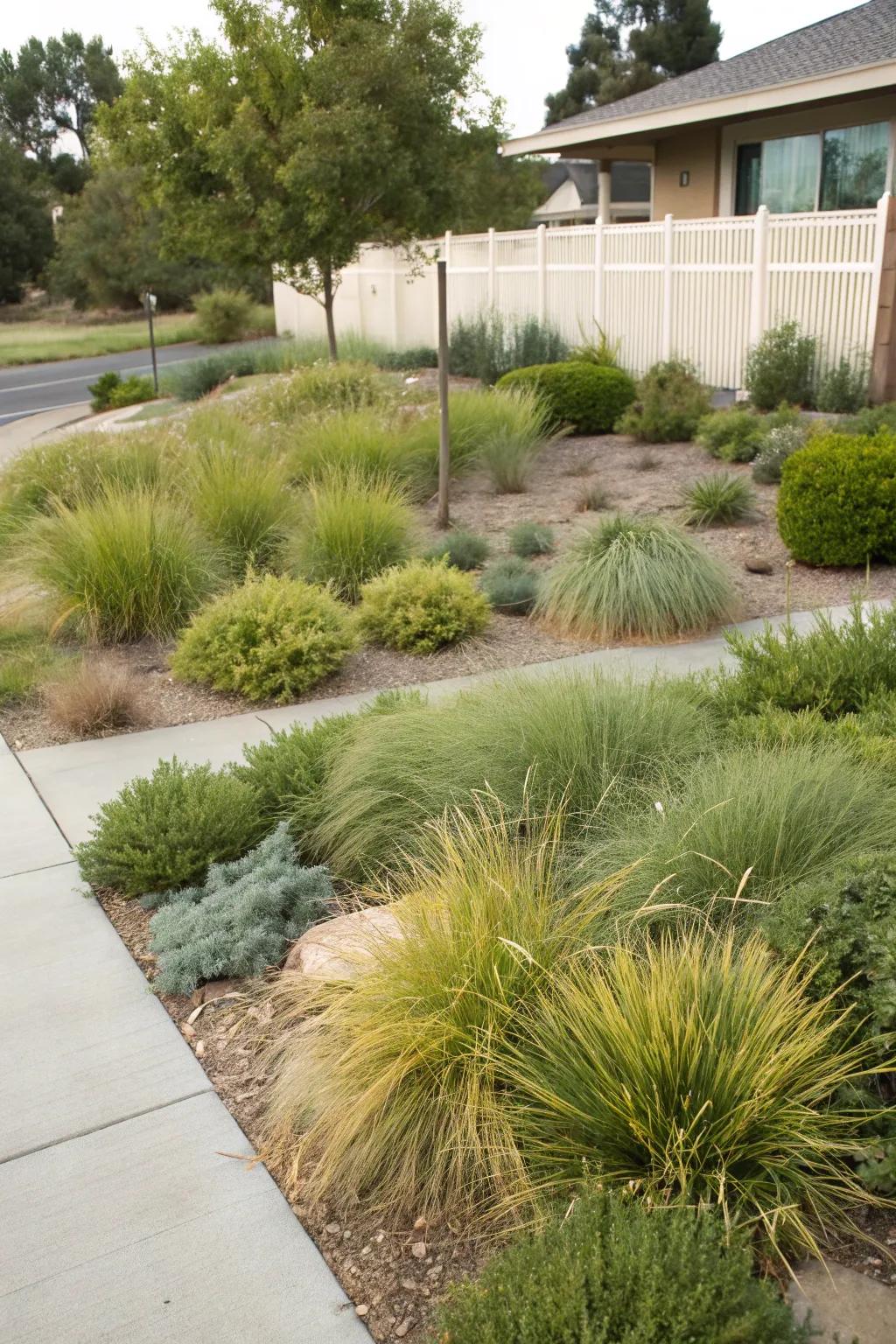
Drought-tolerant grasses can add a soft, flowing element to your yard. I’ve planted them in clusters to create natural barriers and focal points.
Useful items to consider:
- Drought-Tolerant Grass Seed Mix: Enhance your yard with resilient grasses that thrive in low-water environments effortlessly.
- Garden Soil for Dry Climates: Ensure optimal growth for your grasses using soil designed for arid conditions.
- Automatic Drip Irrigation Kit: Maintain a healthy yard with an efficient irrigation system tailored for drought-tolerant plants.
11. Incorporate Ornamental Grasses

Ornamental grasses are not only beautiful but also hardy. I’ve planted them for their texture and the gentle sway they add to the landscape.
Items that may come in handy:
- Ornamental Grass Seed Mix: Enhance your landscape with a diverse mix of drought-resistant ornamental grass seeds. Perfect for arid areas.
- Decorative Pebble Stones: Accent your grasses with smooth decorative pebbles, adding texture and elegance to your garden.
- Garden Soil for Desert Plants: Support your ornamental grasses with soil designed for optimal drainage in desert climates.
12. Add a Water Feature
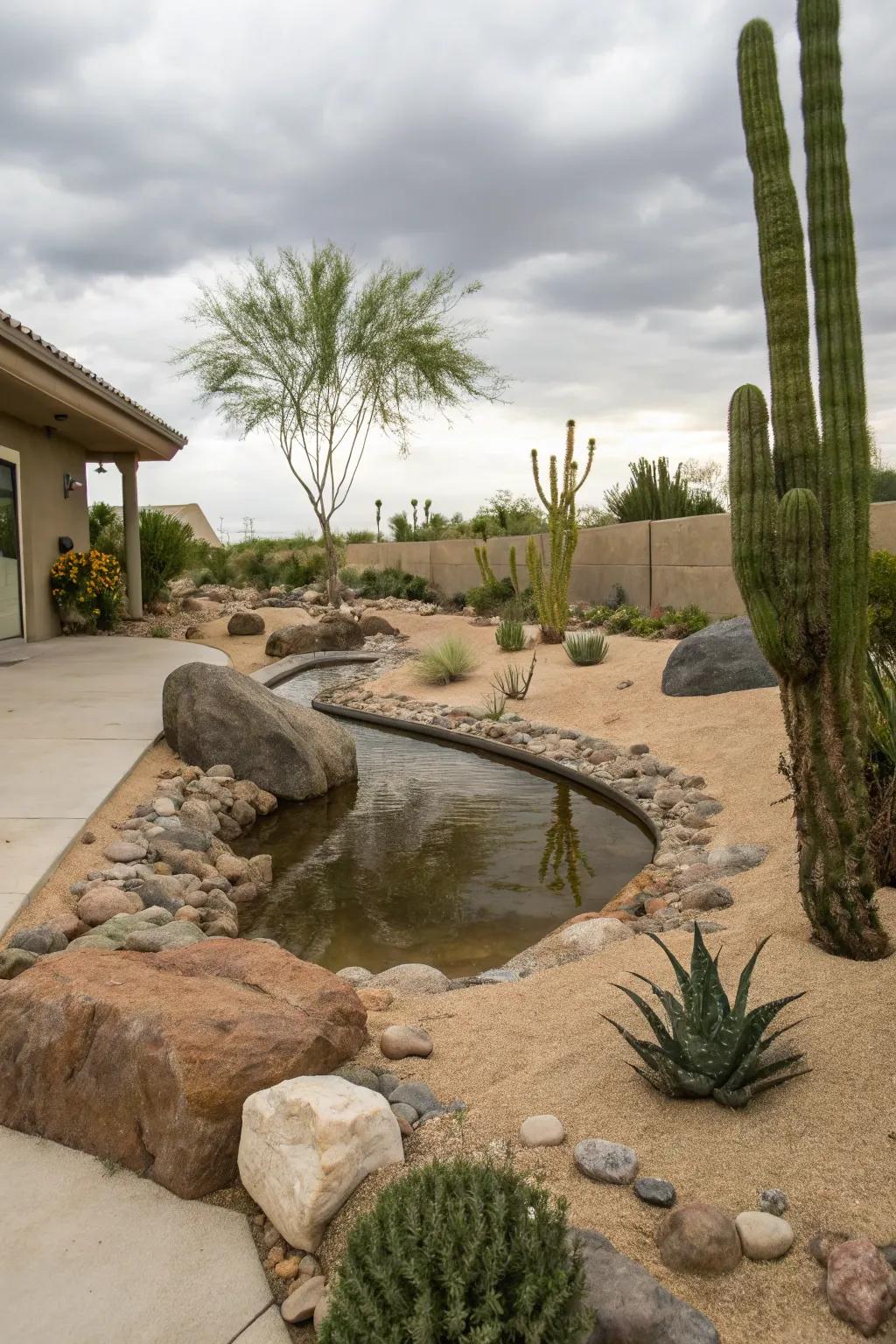
Even in a desert landscape, a small water feature can add a soothing element. I’ve seen how a modest fountain can attract birds and enhance the ambiance.
A few helpful options:
- Solar-Powered Water Fountain Pump: Enhance your garden with an eco-friendly solar fountain, attracting birds with minimal maintenance.
- Outdoor Waterfall Kit: Create a serene desert oasis with a cascading waterfall, perfect for relaxation and bird attraction.
- Small Garden Pond Liner: Design a durable pond to complement your landscape and invite wildlife into your desert garden.
13. Use Decorative Rocks and Gravel

Decorative rocks and gravel can create a textured, layered look that sets the stage for your desert plants. Mixing different sizes and colors can add depth and interest, a technique I’ve found especially effective.
Some handy options:
- Mixed Color River Rock Stones: Enhance texture and depth in your landscape with these vibrant river rock stones.
- Variety Gravel Mix for Landscaping: Create unique patterns with this variety gravel mix, perfect for adding visual interest.
- Multi-Sized Decorative Pebbles: Layer your garden beautifully with multi-sized decorative pebbles for a natural look.
14. Experiment with Gravel Sizes

Mixing different gravel sizes can add a unique texture and depth to your landscape. I’ve played with this in my garden, and it really draws attention.
Products that could assist:
- Natural River Pebble Stones: Enhance your landscape with smooth river pebbles, adding texture and natural appeal instantly.
- Crushed Granite Gravel: Use crushed granite gravel to create stunning pathways and contrast in your desert landscape.
- Decorative Polished Gravel: Accentuate your design with polished gravel for a refined and elegant outdoor appearance.
15. Balance Geometric and Organic Shapes
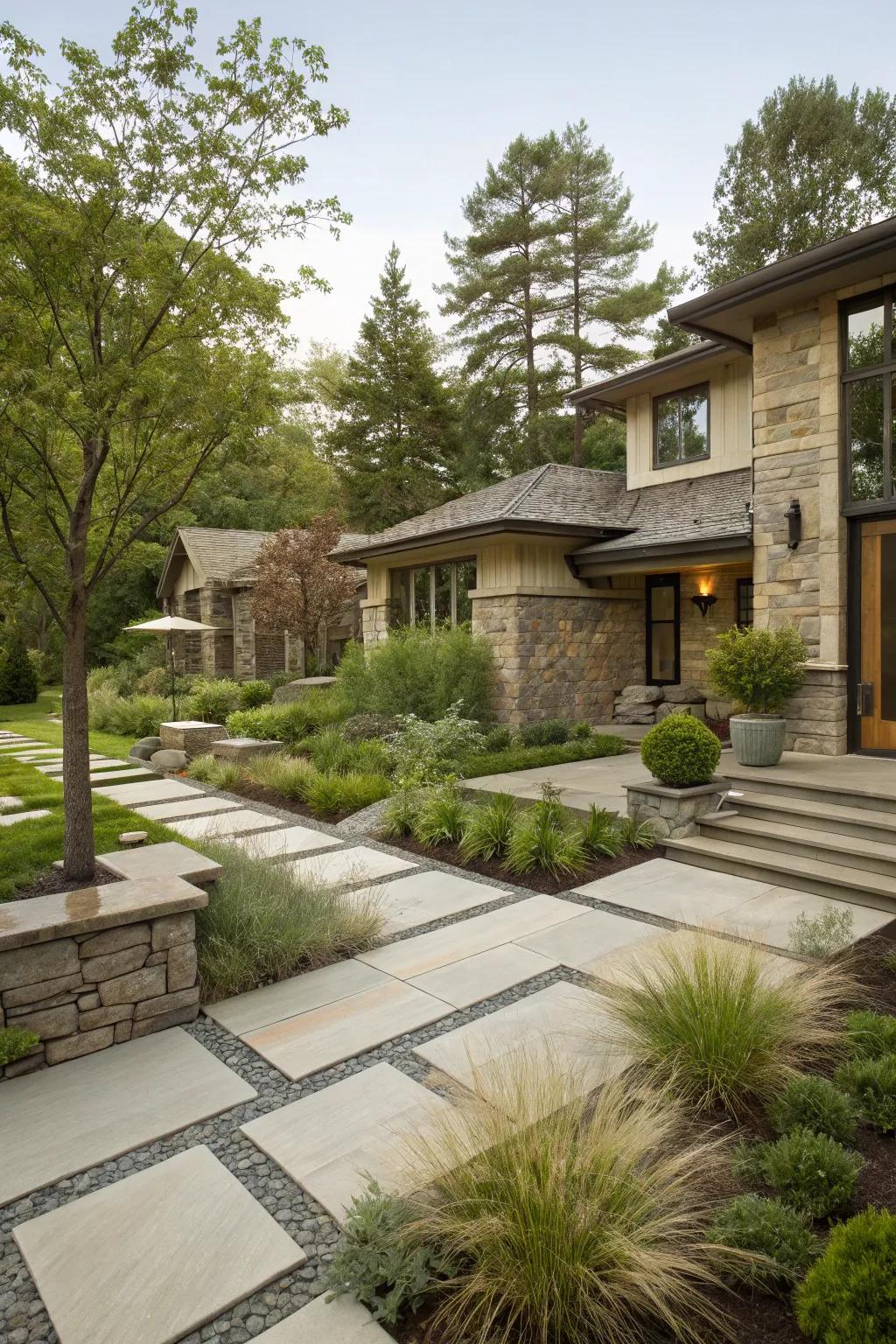
Mixing geometric hardscapes with organic plantings creates a visually engaging design. I’ve found that this balance makes my yard feel both structured and wild.
You might give these a try:
- Square Concrete Pavers: Create structured pathways with durable pavers, balancing your garden’s wild and structured elements.
- Decorative Gravel Stones: Enhance your landscape’s texture with gravel stones, adding visual interest and drainage functionality.
- Native Desert Plants Assortment: Plant a variety of drought-tolerant plants to introduce organic shapes and vibrant greenery in your yard.
16. Strategically Use Pots and Planters
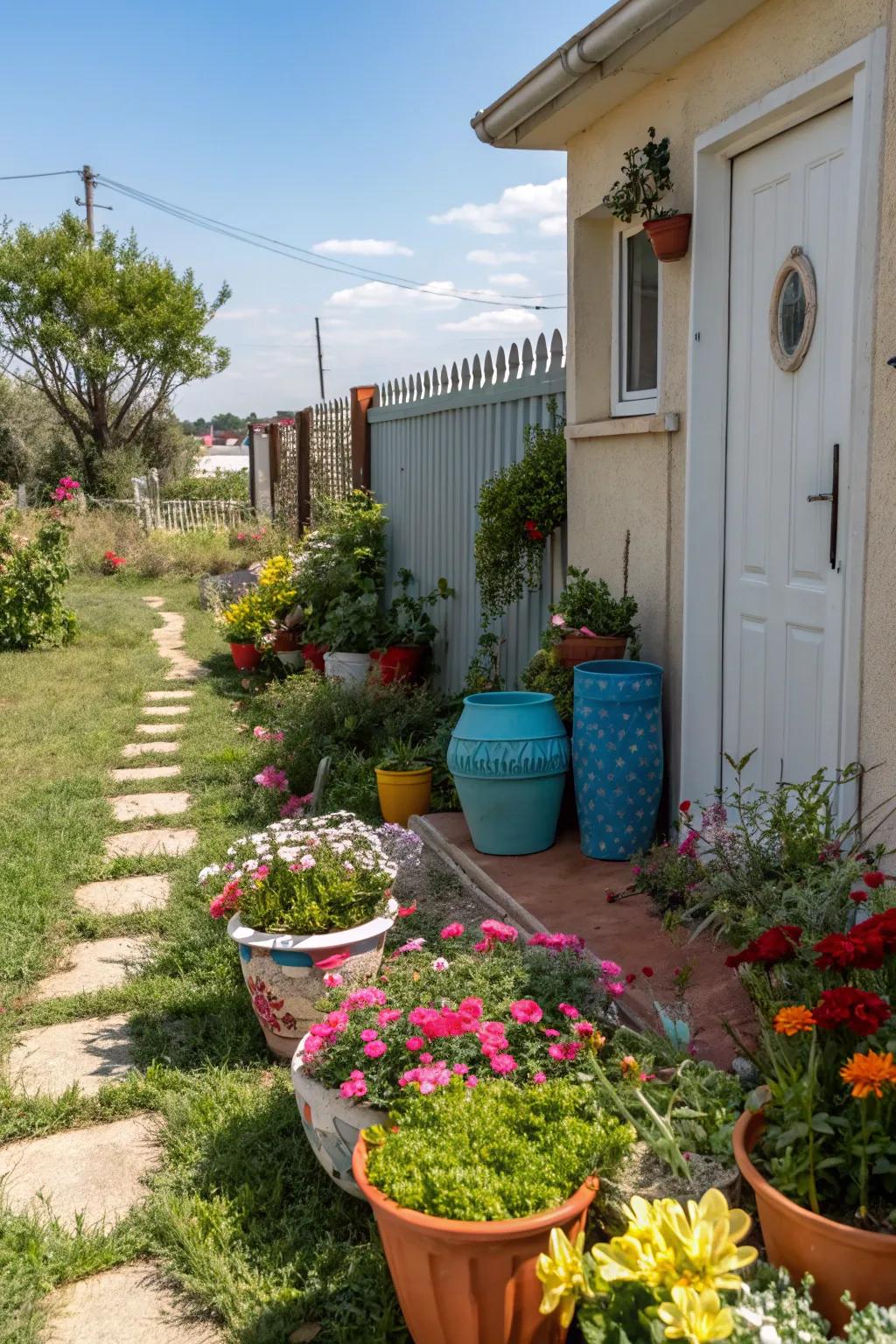
Pots and planters can add layers and create focal points in your yard. I love experimenting with different shapes and sizes to add variety and visual interest.
A few relevant products:
- Colorful Ceramic Planters: Enhance your garden’s vibrancy with colorful ceramic planters. Add texture and charm effortlessly.
- Tall Outdoor Planters: Create striking focal points with tall outdoor planters. Elevate your plants and style.
- Decorative Stone Planters: Bring a natural touch with decorative stone planters. Perfect for any desert landscape theme.
17. Try Layered Planting
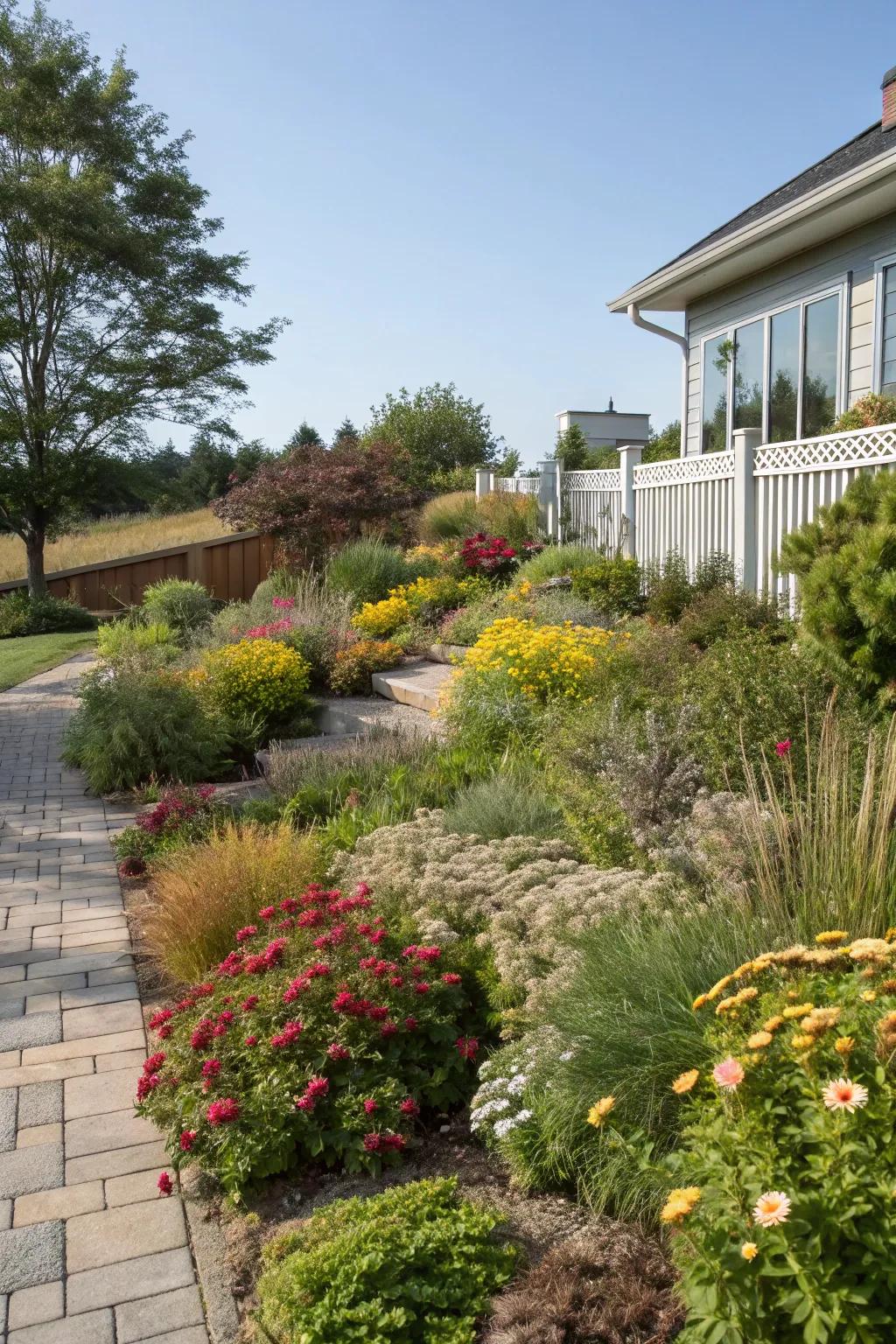
Layering plants of different heights adds depth and visual interest to your yard. I’ve used this technique to create a lush look that’s both structured and natural.
A few choices to try:
- Drought-Resistant Perennial Flower Seeds: Incorporate vibrant blooms in your landscape effortlessly with resilient, drought-tolerant perennial seeds.
- Decorative Garden Pebbles: Enhance your garden’s texture and colors using decorative pebbles for a natural feel.
- Tiered Metal Plant Stands: Add height variation seamlessly with stylish tiered metal stands for your plant pots.
